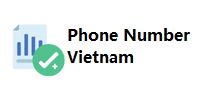pro version gives you access to amazing features for your website.
Get Started with SeedProd “
The Beaver Builder plugin is a popular drag and drop page builder plugin that lets you create some of the most stunning layouts for your WordPress blog in a matter of minutes.
The best thing about this plugin is the level afghanistan phone number library of flexibility it offers. You can take control of almost anything.
Colors, text, fonts, images – everything can be fully customized to get the exact look you’ve always dreamed of.
Another thing you’ll love about Beaver Builder is that unlike other page builder plugins, it’s completely beginner-friendly, and you won’t have to spend hours trying to figure out how to use it. Plus, it also offers dozens of visually stunning templates to help you get started.
Check out our Beaver Builder review here. Let’s now see how to create your own custom layouts using this plugin.
Step 1: Installing and Configuring Beaver Builder in WordPress
The first step is to install and activate Beaver Builder on your website. You can download the plugin by visiting the Beaver Builder website . Once activated, go to Settings » Page Builder .
Here you can enter your license key to activate support and receive updates. After that, you’ll be ready to create your first custom layout.
Step 2: Creating your first custom layout
To create your first custom layout, go how to achieve synergy between experience and content to All Pages » Add New in your WordPress dashboard. In your text editor, you’ll have the option to switch to the page builder.
Simply click on this option and you will see the page builder tab opening. You will see several template options here, so select the one that you like the most for your layout. You can also click on the drop-down arrow and select the type of layout you want. This could be for your landing pages or content pages.
Once done, you will be taken to the drag and drop builder. To edit a particular field, simply hover over that specific area, click on it, and start customizing the design.
You can add up to 6 columns, sidebars, audio, images, separators, and more to your layouts. To add rows and sidebars, click the Row Layouts tabs . Then drag and drop the desired number of columns into your visual builder.
This allows you to organize your model hierarchy.
Once the columns are added, simply click on them and customize them as per your needs. You can change the background, text color, add links, text, borders, and more to your columns. These columns and rows can also be saved for later use. To do so, simply click on the Save button at the bottom of the pop-up window.
For other elements, you need to use the sault data Basic Modules option . You also have several other elements that you can add to your layout, such as buttons, accordions, pricing tables, maps, countdown timers, and more.
You simply need to drag the elements from the right and drop them into the visual builder on the left. Each of these elements is customizable. So, for example, if you want to add a new title, simply click on Title and drag and drop it into your layout. After that, click on the Heading element to customize it.
You will have three different tabs here. General, Style, and Advanced . The first one allows you to add texts, links, etc. to your headings. The second tab allows you to style the heading with different colors, fonts, etc. The Advanced option allows you to work on margins, visibility, responsiveness, animation, etc.
You can add as many elements and modules as you want using the same method, and then customize it to suit your needs. The drop-down menus here make this task much easier.
Once you’ve edited your layouts, click the Done button in the top right corner of your screen. You’ll see a new pop-up window with several different options, like the ones shown in the screenshot below.
